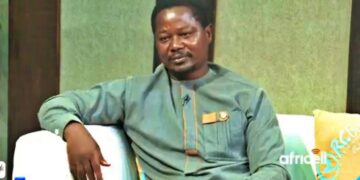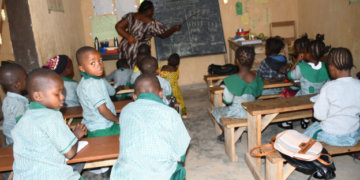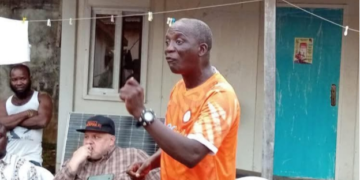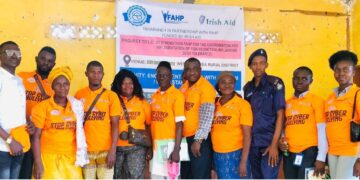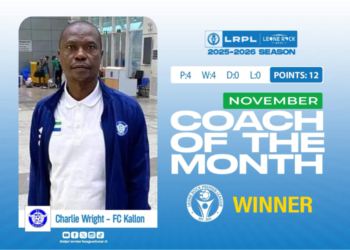By Ahmed Fonike, Esq.
‘The Alibi,’ in a laconic exposé, presents a technical report on events under the ministry—distinct from the usual plain reportage style. It serves as a pedagogical piece on the statements delivered by notable speakers at the event and, more importantly, the anticipated impact on the people.
In the recent civic symposium organized by the Ministry of Information and Civic Education, a nest of innovative initiatives with a mosaic of events, The Alibi examines the presentations of distinguished historical scholars during Sierra Leone’s first nostalgia-filled civic symposium. This memorable event was held on 28th April 2025, at the Julius Maada Bio Parade Square, Wilberforce Barracks, in Freetown.
This symposium—another crowning achievement of the Ministry—attracted key figures from various facets of national life and was honored by the presence of the Vice President of the Republic of Sierra Leone, Dr. Mohamed Juldeh Jalloh, who served as keynote speaker. Other speakers included Her Worship, the Mayor of Freetown City Council, Yvonne Aki-Sawyerr, Professor Joe A.D. Alie, Commissioner Joseph Kaifala, and Madam Isatu Thorlu Bangura. They all tailored their presentations to the theme: “Reclaiming the Significance of April 27th—Independence Day,” a date that has long held judicial notice in the nation’s history.
A historian, educator, and author, Professor J. A. D. Alie delivered a succinct presentation, giving a historical flashback to the roots of Sierra Leone’s independence struggle. He noted that the desire for independence began as early as the 1898 House Tax War, when Bai Bureh and other chiefs in the protectorate unanimously decided not to pay the colonial house tax.
However, he clarified that before this unity, some chiefs initially opposed the decision, hoping to succeed the unpopular colonial authorities. Under the leadership of Sir Milton Margai, the first Prime Minister of Sierra Leone, several organizations emerged in the late 1950s to support the call for independence, thus augmenting the efforts of the ruling Sierra Leone People’s Party (SLPP). The three main pressure groups were the Protectorate Educational Progressive Union (PEPU), the Sierra Leone Organization Society (SOS), and the People’s Party (PP) from the colony.
According to Professor Alie, Sir Milton Margai preferred negotiation over confrontation. He proposed a roundtable involving the government and these organizations to seek independence through dialogue. It was through this negotiation process that April 27th was chosen as Independence Day—a symbolic reflection of the 1898 House Tax War.
A historian and Chief Commissioner of the Monuments and Relics Commission, Commissioner Kaifala portrayed Sir Albert Margai and Siaka Stevens as political radicals in contrast to the more cautious Sir Milton Margai.
He explained that the main disagreement was whether independence should come before or after elections. Sir Milton favored independence before elections, while Siaka Stevens and Albert Margai insisted on elections first. In an attempt to unify efforts, Sir Milton formed an umbrella delegation inclusive of all regional representatives to negotiate with the British in England.
Siaka Stevens joined the team but refused to sign the final agreement, citing three main reasons:
1. His stance on elections before independence,
2. His belief that Sierra Leone should have its own experts for the negotiations, and
3. His suspicion that Sir Milton had met secretly with British officials prior to the official negotiations.
Consequently, Siaka Stevens claimed that the government’s promises did not reflect true emancipation and development for the people. This led him to form a new movement—the All People’s Congress (APC) in July 1960.
To prevent the derailment of the independence talks, Sir Milton reportedly had Stevens and his allies detained for a time. Eventually, April 27, 1961, was officially adopted as the nation’s Independence Day.
The daughter of P.C. Bai Farma Tass II of Kambia District—an independence hero and vibrant SLPP supporter—Madam Bangura recalled her father’s vital role in both local and international independence negotiations.
She emphasized that Sierra Leone’s independence should reflect self-reliance and freedom from Western control. She highlighted the symbolic raising of the national flag and the lowering of the British Union Jack as a defining moment.
Madam Bangura also noted the inclusion of women and young girls in the independence celebration. She herself, as a student, was among those invited to witness the 1961 Independence Day—an early signal of women’s future inclusion in governance.
Delivering the keynote address, the Vice President reminded the audience that Sierra Leone had, in the 1960s, well-educated individuals who made the nation proud globally. He emphasized that independence is not an end but a means to an end—a continuous journey of freedom, liberation, and self-determination.
He asserted that the most appropriate way to celebrate independence is through civic education, which deepens people’s understanding of their country and culture. The Vice President described independence as both a privilege and a responsibility—one that calls for self-governance and development, regardless of the challenges faced.
He stressed the importance of national cohesion, highlighting Sierra Leone’s globally recognized efforts in reconciliation and nation-building, transcending political affiliations.
The Vice President applauded the Ministry of Information and Civic Education for its impactful and innovative approach to commemorating Independence Day. The anticipated impacts include enhanced historical awareness through the symposium, renewed understanding of independence as the capacity to take control of national destiny even in difficult times, and global acknowledgment of Sierra Leone’s strides in peace, leadership, and reconciliation.
From Professor Alie’s presentation, audiences gained knowledge of the SLPP symbol (the palm tree), whose 13 palm fronds represent the then 12 districts and the colony. He also highlighted Rev. Jones a.k.a. Lamina Sankoh’s role in uniting the protectorate and colony in the independence struggle. He reiterated that the choice of April 27th was intentional, to mirror the 1898 resistance.
The speakers collectively reinforced the historical significance of hoisting the national flag while lowering the British flag, and the early inclusion of women and girls in nation-building—a foundation laid even at independence.
The Ministry of Information and Civic Education, as a cradle of initiatives, has successfully rolled out another impactful national event. This civic symposium, beyond mere commemoration, created a profound educational and patriotic resonance among citizens, affirming the Ministry’s role in shaping informed and empowered citizens of Sierra Leone.


